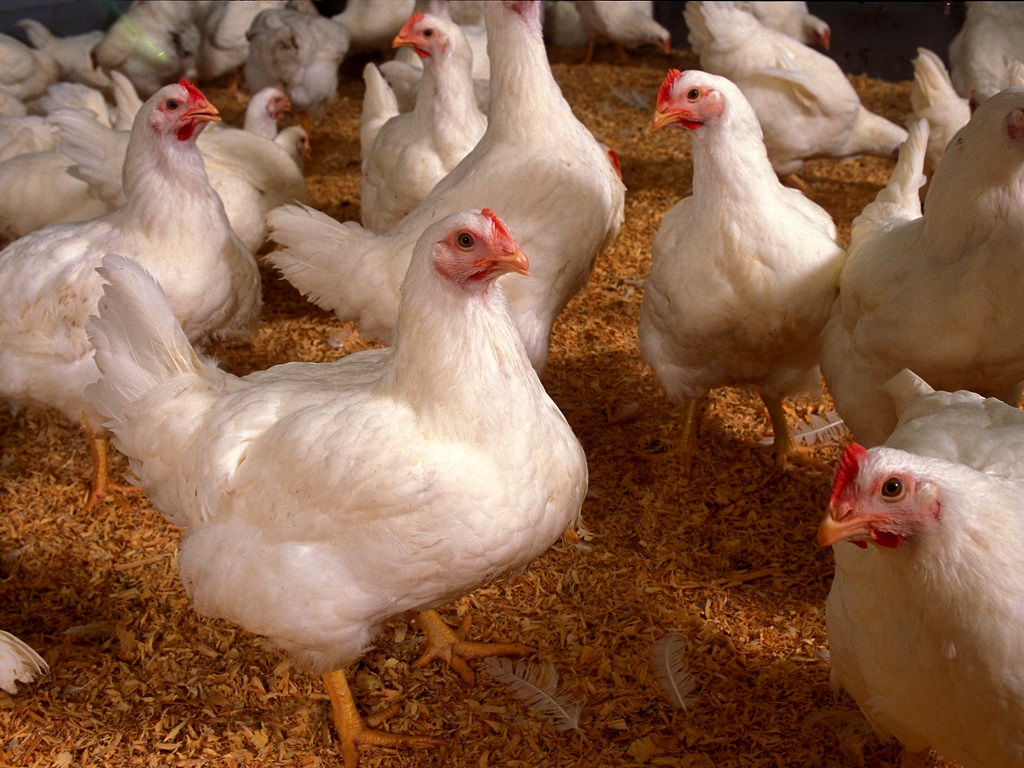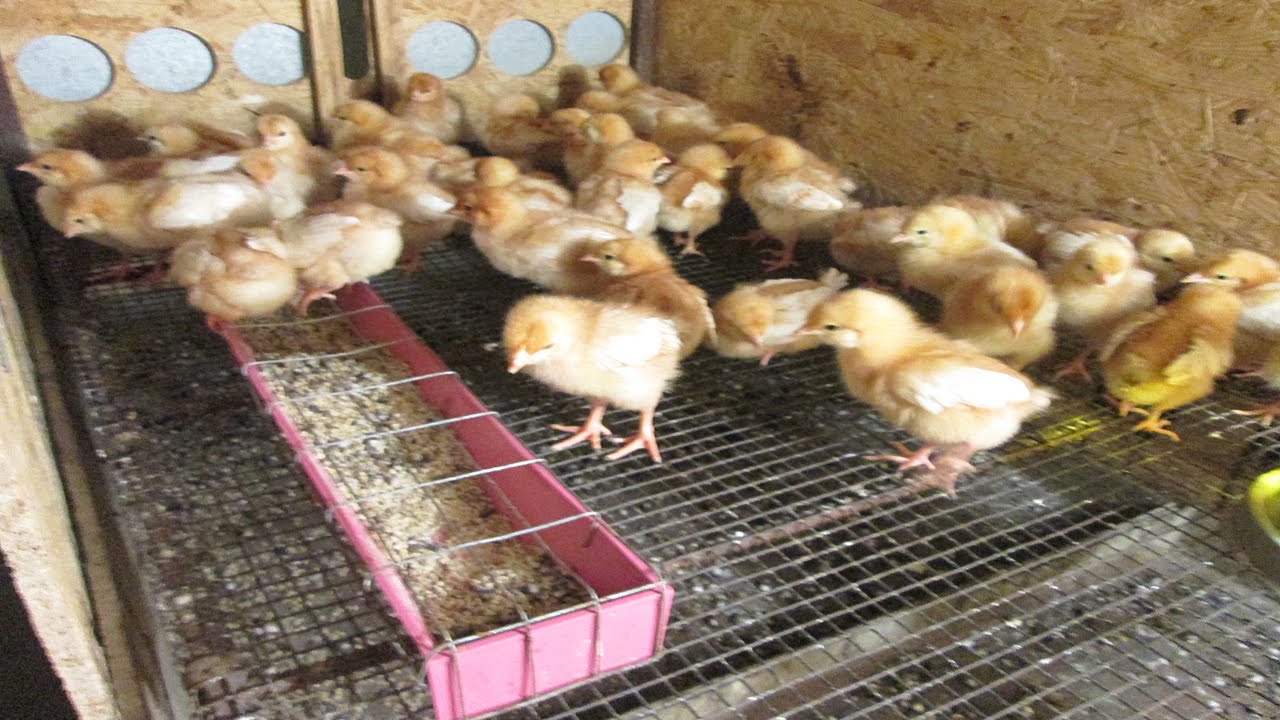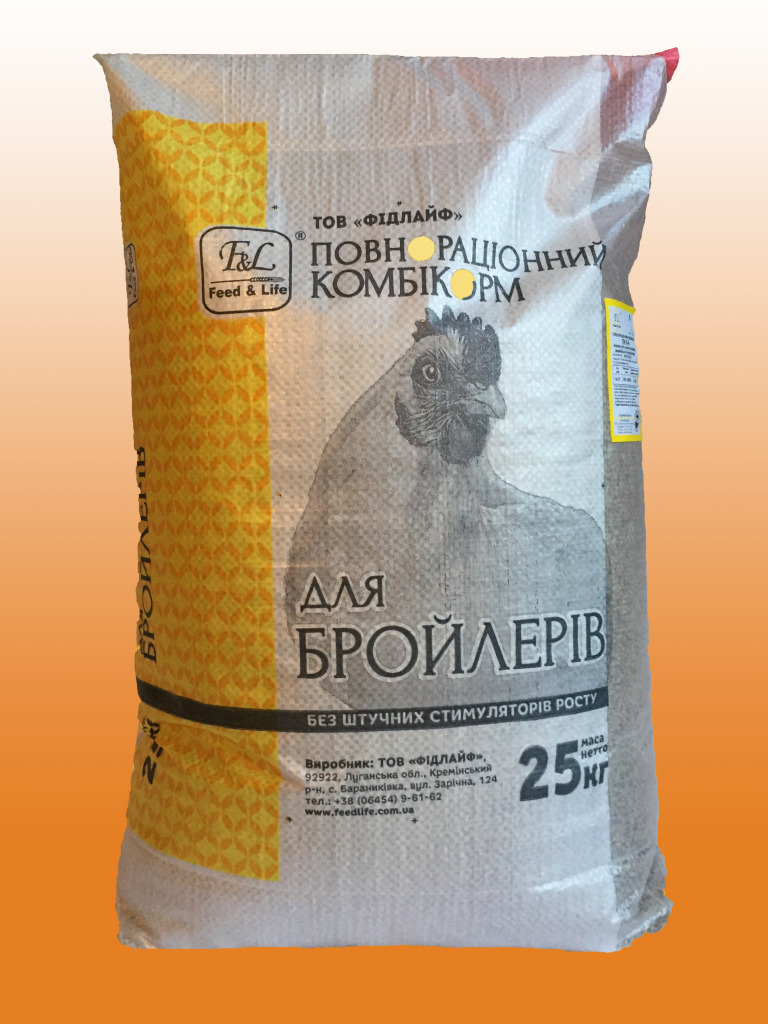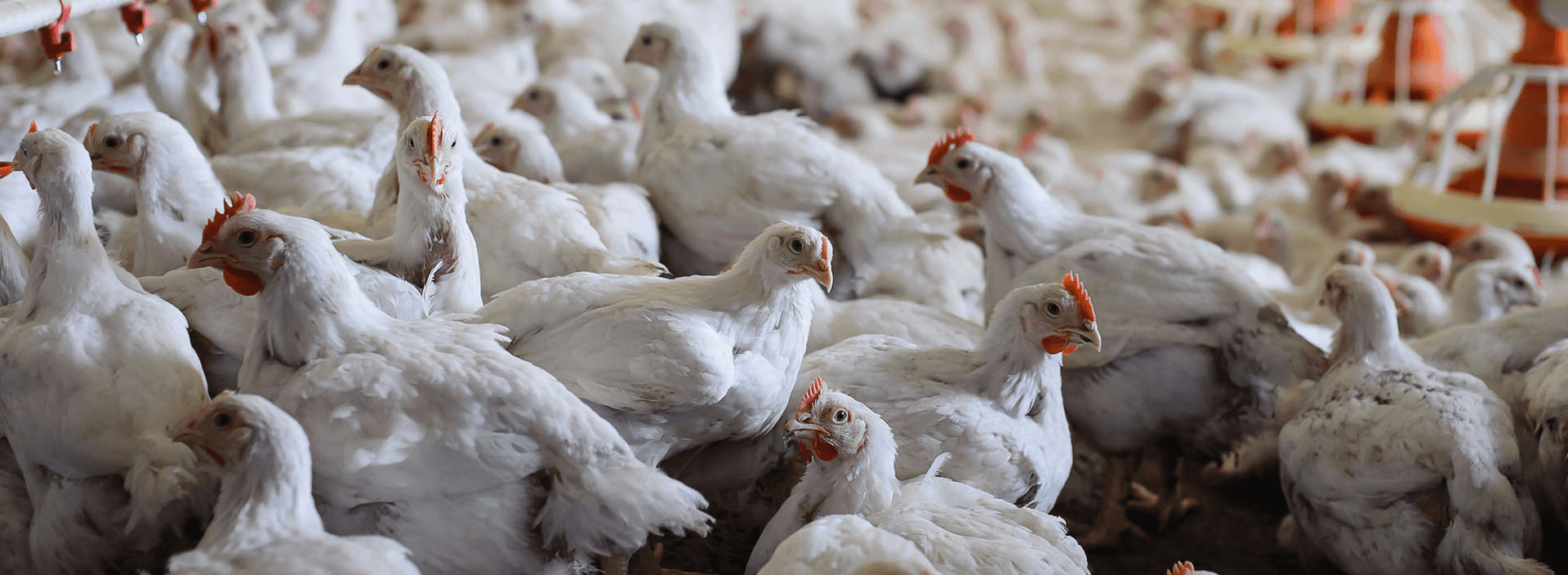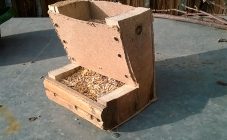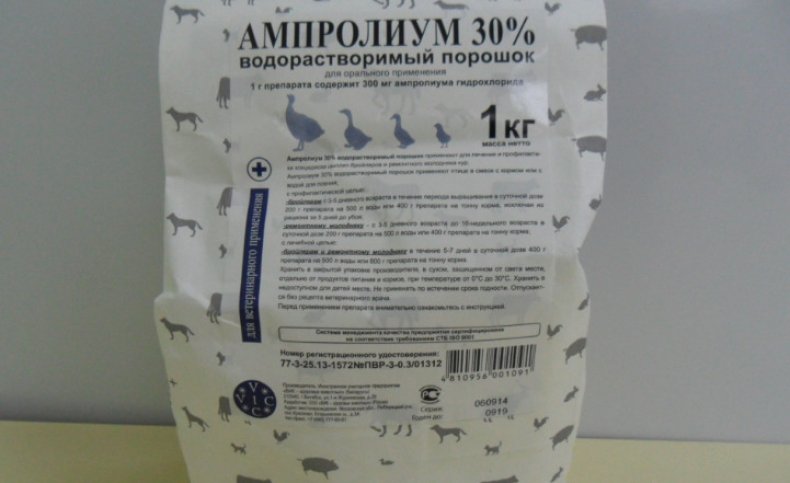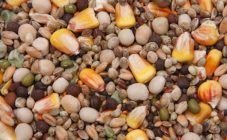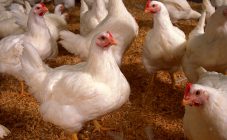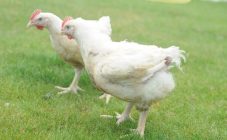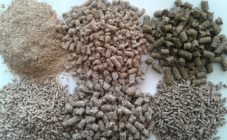Content:
Broiler crosses are varieties of hybrid chicken breeds that are characterized by fast growth rates and early maturity. Most often they are grown on commercial poultry farms, because their genetic characteristics allow them to get the most benefit from meat production.
Broilers - general characteristics and description of popular breeds
The first broiler crosses appeared in the 30s of the last century and after ten years they became popular. By 1960, breeders had developed the industry of early maturing varieties to the maximum. Today there are several dozen meat crosses capable of gaining a mass of 2-2.7 kg by 7-8 weeks of life. But, performance indicators depend on what to feed broiler chickens, in what conditions they are kept and how to care for them.
Throughout the entire existence of broiler crosses, breeders have improved them, since the resulting final hybrid had a number of disadvantages:
- susceptibility to infections;
- low survival rate;
- obesity tendency;
- sensitivity to cold;
- high requirements for the quality and composition of feed.
In the process of working on improving meat hybrids, scientists were able to adjust some indicators. Improved varieties have become the most popular and in demand, not only in commercial poultry farming, but also in small private farms. The following crosses of the meat direction are recognized as the best:
- KOBB-500;
- Tricolor (color broiler);
- Change;
- ROSS-308;
- Broiler-M;
- Hybro-6;
- ROSS-708.
A significant advantage of broiler crosses is the ability to determine the sex of chicks in two ways:
- by color (during the first week);
- by the rate of feather growth during the first molt (up to 3 weeks).
Broiler crosses can be very beneficial if you know the subtleties and nuances of growing. There is nothing complicated in this matter. Below you will find detailed information about what broiler chickens need at home, feeding features and keeping secrets.
Feeding broiler chickens
It is extremely important to know the first rule of feeding chickens - the diet at each stage of development is different. The composition of the feed must be adjusted in time to achieve maximum growth in the shortest possible time. Poultry farmers distinguish 3 stages of broiler feeding:
- starting;
- growth;
- finishing.
At each stage, growing organisms should be provided with the necessary substances for the full development and gain of muscle mass. For growing broilers from the first days, industrial-made or home-made feed is used. The ready-made feed already contains all the substances necessary for the chick, and homemade mixtures should be combined based on the needs of the chicks.
Inexpensive broiler feed
The economic side of the issue is extremely important in broiler farming. Since crosses in this category are distinguished by significant feed consumption, poultry farmers are looking for the most profitable options.Industrial compound feed is available for sale in several price categories. It has its advantages and disadvantages, and the main disadvantage is the price - when preparing homemade mixtures, you can save up to 30-40%. Benefits of finished feed:
- balanced composition;
- optimal particle diameter, according to age;
- safety;
- readiness for use.
How to feed broiler chickens: industrial or home mixes - the personal choice of each poultry farmer. But, there is no significant difference in the growth or survival of birds on different types of feed. In addition, ready-made compound feed can also be economical. Inexpensive options for complete, non-concentrated broiler mixes:
- BMVD;
- Kalinka;
- Purina;
- Feedlife.
These manufacturers produce feed for representatives of various breeds, but for broiler chickens, the mixtures must be marked accordingly: PK-5 (starting) and PK-6 (fattening, growing and finishing). The mixtures differ in composition, balance of proteins, fats, carbohydrates and the content of additional additives.
Age-appropriate broiler feed recipes
It is necessary to feed broiler chickens at home with balanced mixtures that give high growth rates from the first days. Below are the recipes that can be used to prepare balanced feed mixtures for each age stage at home.
Starter diet
The most important thing in growth and development is starter feeding, that is, feeding from the first days of life. After the chicks are transferred from the incubator to the brooder, they are not immediately given ready-made combined feeds. The ration of the first week consists of the following products, indicating the daily allowance in grams per 1 chick:
- boiled egg, 2-3 g;
- cottage cheese up to 5% fat content 1-2 g;
- chopped corn or wheat 5-7 g;
- boiled millet (porridge) 3-4 g;
- boiled vegetables (carrots or potatoes) 1 g each;
- greens 1-2 g.
After the end of the first week, the base is introduced - starting compound feed prepared according to the following scheme.
| The product's name | Percentage | Amount in grams per 10 kg of mixture |
|---|---|---|
| Corn | 0.45 | 4500 |
| Wheat | 0.082 | 820 |
| Peeled barley | 0.05 | 500 |
| Fish flour | 0.07 | 700 |
| Sunflower meal | 0.18 | 1800 |
| Fodder fat | 0.025 | 250 |
| Yeast | 6.8% | 680 |
| Dry return | 0.03 | 300 |
| Herbal flour | 0.03 | 300 |
| Premix P-5 | 1 | 100 |
| a piece of chalk | 0.005 | 50 |
The feed mixture prepared according to this recipe contains up to 20-25% proteins of animal and plant origin. At an early stage, it is important not only to have proteins for growth, but also the appropriate minerals and vitamins that are needed for development. Therefore, it is necessary to supplement the main feed mixture with herbs and vegetables, it is permissible to use fermented milk products or ready-made vitamin and mineral supplements corresponding to age.
Growth diet
During the period of intensive growth and weight gain, poultry farmers feed the chicks with growth, or fattening mixtures. Cooking recipe and ratio of ingredients in the table.
| Product | Percentage | Amount in grams per 10 kg of mixture |
|---|---|---|
| Corn | 0.55 | 5500 |
| Wheat | 0.11 | 1100 |
| Sunflower meal | 0.15 | 1500 |
| Fodder fat | 0.026 | 260 |
| Yeast | 0.05 | 500 |
| Dry return | 0.03 | 300 |
| Herbal flour | 0.03 | 300 |
| Premix P-6 | 0.01 | 100 |
| a piece of chalk | 0.004 | 40 |
Minor deviations in the composition of feed are not dangerous for the life and health of the growing livestock.
The growth diet is introduced from 21-28 days and is used no more than 2-2.5 weeks, in a daily amount of 95-100 grams per chick. By the end of the period of intensive growth, chicks should eat at least 160 grams of feed.
Finishing ration
The final stage of feeding broiler chickens is the finishing ration. The mixture contains a lot of proteins, due to which muscle growth is ensured. The carcasses of broilers fed with this technology contain a minimum percentage of fat and are distinguished by high taste and marketability. Finishing feed composition in the table.
| Product | Percentage | Amount in grams per 10 kg of mixture |
|---|---|---|
| Corn | 0.63 | 6300 |
| Soybean meal | 0.216 | 2160 |
| Yeast | 0.04 | 400 |
| Fish flour | 0.04 | 400 |
| Meat and bone meal | 0.03 | 300 |
| Herbal flour | 0.02 | 200 |
| Chalk, limestone or shell | 0.004 | 40 |
| Table salt | 0.001 | 10 |
| Fodder fat | 0.01 | 100 |
| Premix P-6 | 0.01 | 100 |
The daily feed rate for 1 broiler is 160-210. At the age of 30 days, grown up monthly broilers gain weight up to 2.5 kg, and by 45-60 days they are ready for slaughter.
The dry feed mixtures described above are not the only feed product. A proper diet contains complementary foods such as herbs, vegetables, and animal products. Otherwise, chickens may die from disease as a result of nutritional deficiencies.
What else do broilers feed
Supplementary foods should be included in the broiler chick's diet. What products, their quantity and frequency of serving are indicated in the table.
| Product | Amount in grams per 1 individual | Recommended feed frequency |
|---|---|---|
| Greens | 01.03.2017 | 1-2 times a day |
| Wheat bran (alone, or as part of mash) | 02.08.2018 | Once a day |
| Buckwheat (a source of iron and other mineral compounds, rich in carbohydrates) | 05.08.2018 | 1 time in 2-3 days |
| Fish fat | 0,5-1 | Once a day |
| Peas (boiled) | 5-6 (from the third week of life) | 1-2 times a day |
| White bread (crackers only) | 01.02.2018 | Once a day |
| Vegetables (boiled) | 02.05.2018 | 1-2 times a day |
| Protein products of animal origin (meat and fish trimmings, buttermilk, cottage cheese) | 5-10 grams (from the third week) | Daily |
The recommended volume should be doubled every 6-10 days. For example, if at the age of 2-3 days chickens eat 2-3 grams of greens, then on the tenth day the volume can be increased to 4-6 grams.
Errors in broiler feeding
Course changes in the diet and the division of the feeding stages into 3 stages, allows poultry farmers to get a good result - a high body weight at the time of slaughter. But, it is not always possible to achieve success in fattening.
The main mistakes that lead to stunted growth, pain and death of chicks:
- An excess of food leads to obesity, a decrease in defense mechanisms, and pain. Overeating broiler carcasses are of low quality due to their high fat content.
- An excess of carbohydrates also leads to obesity. The growing body has nowhere to put excess calories, and they are deposited in the form of adipose tissue, causing growth retardation and other developmental pathologies.
- Meals that are too rare. For growing broilers, it is recommended to feed the daily food volume in 3-4 meals.
- Refusal from animal products is fraught with slow weight gain. Animal protein is best absorbed by the body. Farmers use the heads and paws left over from slaughter, add protein flour from insect larvae, meat and fish scraps in the mash, cottage cheese and other protein products.
- Inappropriate particle size in feed will lead to poor digestion and slow weight gain.
- Joint maintenance and general diet in females and males. The needs of different sexes differ, therefore it is advisable to feed them separately.
High productivity in broiler farming directly depends on the diet, but it is important to take into account other rules of maintenance, disease prevention and care. With properly organized feeding and maintenance, it will be possible to achieve maximum results and minimize losses.
